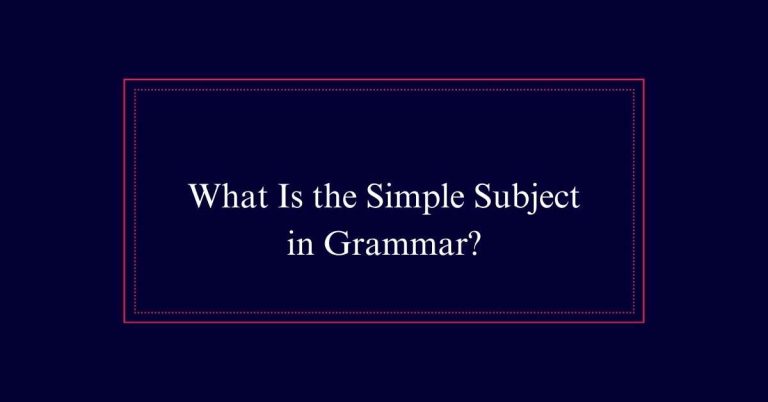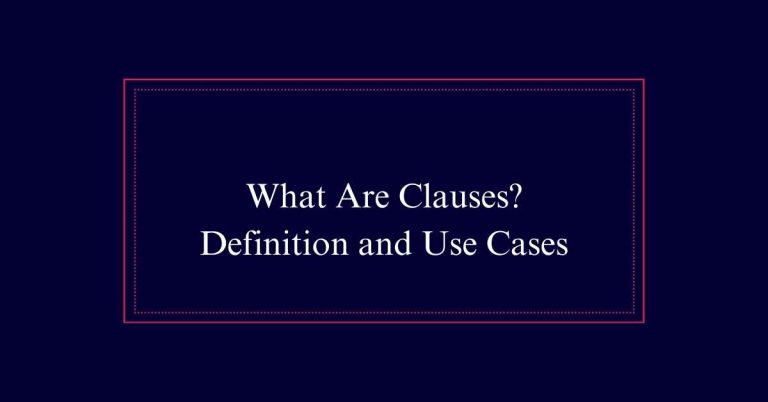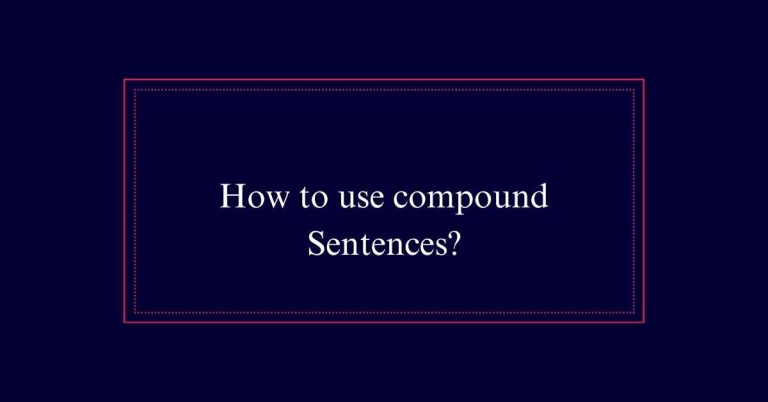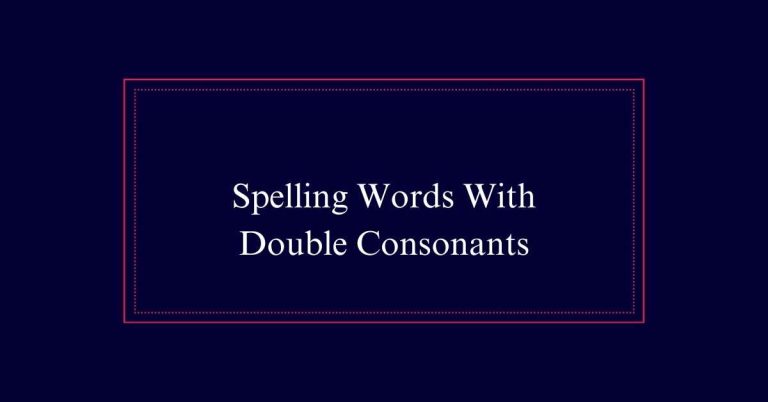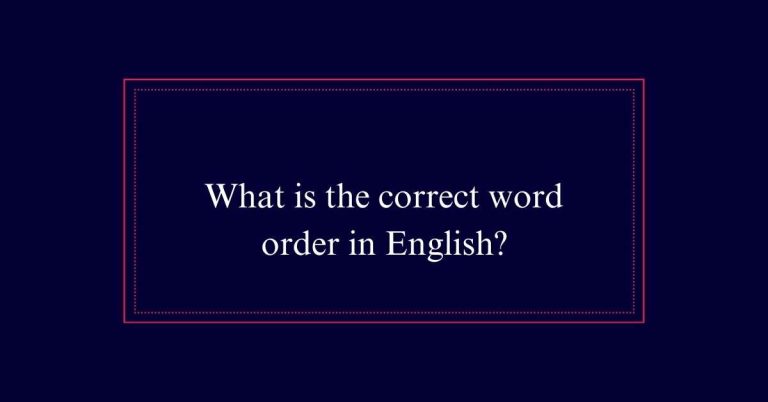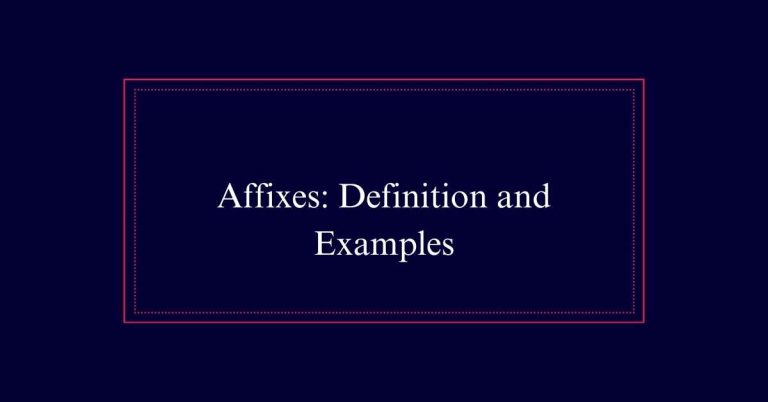Commas in Complex Sentences
In complex sentences, commas play an important role in separating independent and dependent clauses for clarity. Use a comma after a dependent clause when it precedes an independent clause.
For instance, ‘Although it was raining, we went for a walk.’ Independent clauses joined by conjunctions like ‘and’ or ‘but’ require commas before the conjunction, e.g., ‘She speaks Spanish, and he speaks French.’ Avoid unnecessary commas that can disrupt the sentence flow.
Understanding Complex Sentences
What defines a complex sentence is the combination of an independent clause and a dependent clause. The independent clause can stand alone as a complete sentence. For example, ‘I finished my work’ is an independent clause.
On the other hand, a dependent clause cannot stand alone. It provides additional information and needs an independent clause to form a complete sentence. For instance, ‘because I finished my work’ is a dependent clause.
In complex sentences, the use of commas depends on the position and type of clauses. If the dependent clause precedes the independent clause, a comma is needed. However, if the independent clause comes first, a comma is often unnecessary.
Identifying Clauses
Understanding how to identify clauses is fundamental for constructing complex sentences correctly. Clauses are the building blocks of sentences and come in two types: independent and dependent.
An independent clause can stand alone as a complete sentence. It has a subject and a predicate, conveying a complete thought.
In contrast, a dependent clause cannot stand alone. It also contains a subject and a verb but relies on an independent clause to provide context.
Recognizing these clauses is important because it affects punctuation, especially the use of commas. Proper identification guarantees that sentences are structured effectively, enhancing clarity and readability.
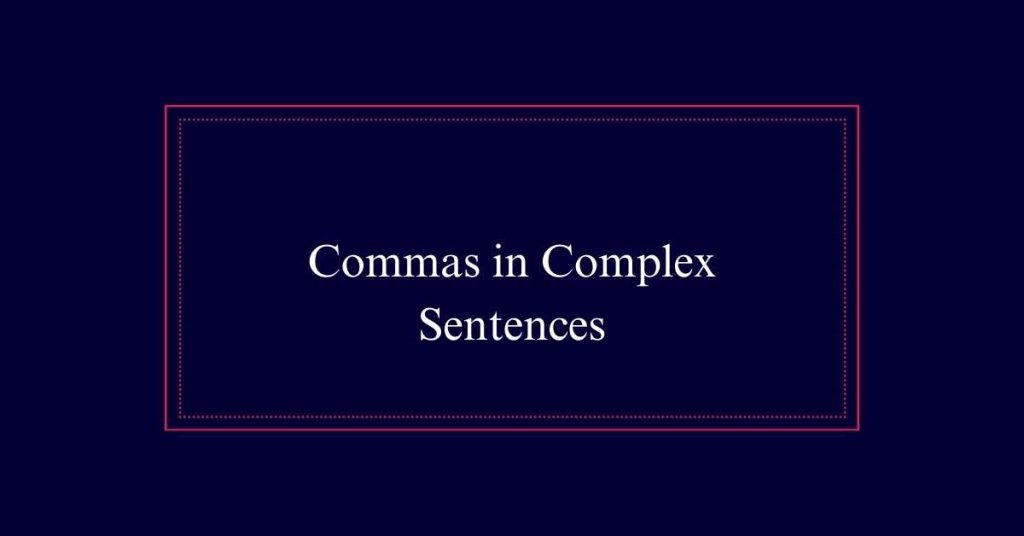
Role of Independent Clauses
Independent clauses play an essential role in constructing clear and effective complex sentences. These clauses can stand alone as complete sentences, providing a clear and concise thought.
When used within complex sentences, they deliver the main idea, guaranteeing the sentence’s foundation is strong and understandable. Proper comma placement is vital with independent clauses to avoid run-on sentences and maintain readability. Commas are used to set boundaries, preventing confusion by clearly separating ideas.
The independent clause must be distinct, making the sentence’s primary message clear. Ultimately, mastering the use of independent clauses and comma placement ensures your writing is structured, precise, and easy to comprehend.
Joining Independent Clauses
To further enhance the clarity and structure of your writing, it’s important to understand how to join independent clauses effectively.
Independent clauses can stand alone as complete sentences, but combining them can create more complex and nuanced expressions.
To join two independent clauses, a comma is placed before a coordinating conjunction such as ‘and,’ ‘but,’ or ‘so.’ This not only improves readability but also helps to avoid run-on sentences.
Without the comma and conjunction, sentences may become confusing or grammatically incorrect. For instance, ‘She loves reading, and he enjoys writing’ is clearer than ‘She loves reading he enjoys writing.’
Importance of Conjunctions
Conjunctions play an essential role in linking clauses to maintain clarity and coherence in complex sentences. Words like ‘and,’ ‘but,’ ‘or,’ ‘so,’ and ‘yet’ are common conjunctions. They serve to join two independent clauses, ensuring the sentence flows logically.
For instance, ‘I wanted to go for a walk, but it started raining.’ Here, the comma and conjunction ‘but’ effectively link the two ideas. Without the conjunction, the sentence might become confusing or lead to a comma splice. Consequently, conjunctions help maintain grammatical accuracy.
Avoiding Comma Splices
A comma splice occurs when two independent clauses are incorrectly joined by a comma without a conjunction. This mistake can confuse readers and disrupt the flow of your writing.
To avoid comma splices, make sure that each independent clause is properly connected. You can do this by adding a coordinating conjunction like ‘and,’ ‘but,’ or ‘so.’ Alternatively, you can use a semicolon to separate the clauses.
For example, instead of writing, ‘I went to the store, I bought apples,’ you should write, ‘I went to the store, and I bought apples,’ or ‘I went to the store; I bought apples.’
Dependent Clause Basics
Dependent clauses are fragments that provide additional information and cannot stand alone as complete sentences. They rely on an independent clause to form a complete thought. Dependent clauses often begin with subordinating conjunctions like ‘because,’ ‘although,’ or ‘if.’ Here’s a simple breakdown:
| Type | Example | Function |
|---|---|---|
| Cause | Because she was late | Explains a reason |
| Condition | If it rains | Sets a condition |
| Concession | Although he tried | Shows contrast or exception |
Comma Placement Rules
In complex sentences, comma placement rules hinge on the relationship between independent and dependent clauses.
When a dependent clause precedes an independent clause, a comma is required after the dependent clause. For example, ‘Because it was raining, we stayed indoors.’
However, if the independent clause comes first, a comma is generally not needed, such as in ‘We stayed indoors because it was raining.’
Handling Unnecessary Commas
Misplacing commas in complex sentences can lead to confusion and disrupt the flow of writing. Unnecessary commas often break the connection between ideas, making the text harder to follow.
It’s essential to know when commas are not needed, especially with dependent and independent clauses. Removing unwarranted commas will enhance the clarity and readability of your writing.
Here are some guidelines to help you avoid unnecessary commas:
- Do not place a comma before a dependent clause that follows an independent clause.
- Avoid using commas to separate compound subjects or objects.
- Refrain from using commas after conjunctions like ‘and’ or ‘but’.
- Eliminate commas that break the natural flow of a sentence.
- Only use commas when they add necessary pauses or clarity.

